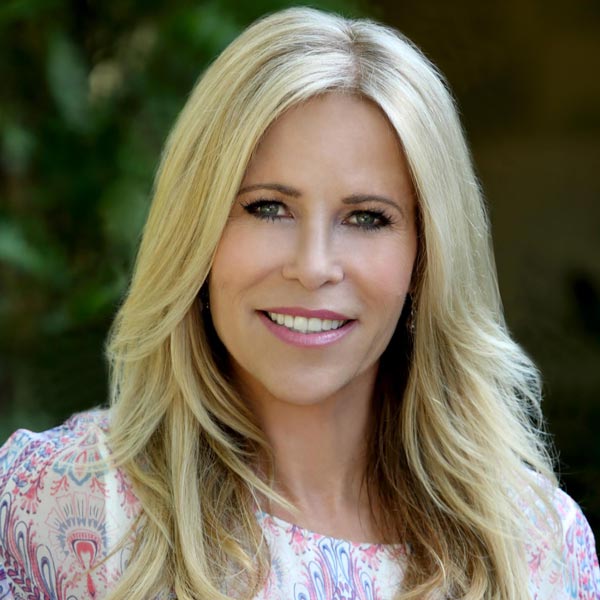I didn’t grow up with abuse of any kind, but I married it, once. It’s taken me years to understand and define the damage caused by emotional toxins. Like environmental toxins that slowly destroy the earth, these toxins pollute the body, soul, and spirit causing a slow destruction in one’s life.
Being with a person who yells or rages at you, who criticizes you, who cusses at you, who puts you down, who is violent in any way, who threatens to hurt you, who dumps their anger on you, who treats you as if something is wrong with you, is toxic to you. This person is not only out of control, they are verbally and emotionally abusive.
The Power of Words
Poisonous words kill, destroy, diminish, and weaken the soul of the recipient, making it easier for the abusive person to continue to project their own inner pain outwardly instead of taking responsibility for their emotions.
Raging in this way establishes for the abusive person an unhealthy way to dump out and vomit painful feelings onto the innocent soul of another person. The behavior harms and damages the heart of both the abuser and abused.
Words are a powerful energetic and creative force. They can uplift and elevate or destroy and kill. This has been scientifically proven. In addition, all major religions stress the importance of using words wisely due to their creative ability.
The Effects of a Toxic Relationship
Being in a toxic relationship literally will poison your soul and slowly kill your body. To protect yourself, your spirit will desperately try to bring healing to both your body and soul. But if you remain unable to create energetic boundaries which block the toxic poisons coming from the abusive person, your spirit will become defeated by a consistent influx of powerful evil forces (words) and begin grieving its inability to remain in the position of defender and protector.
Your spirit will become diminished, broken, small, and trapped, leaving you disassociated and unconscious. Your soul will feel helpless, powerless, and confused. Your body will feel weakened.
What is critical are physical, emotional, and spiritual boundaries. Only when you establish them can you begin to heal and then once again thrive and live in wholeness.
As for the abusive person, the only thing we can do for them is to have compassion. If we must remain in contact with them, we can learn to listen to their pain (from a safe distance) and not take what they say about us personally.
These people are wounded and looking for a way to live with the unease they have inside themselves. Projecting their pain outward helps them to release their pain, despite being a dysfunctional way to get their needs met. In the end, they are often rejected as the people around them leave in one way or another. People around them die, become sick, or leave. No one can thrive in a toxic relationship.
Breaking the Cycle of Toxic Abuse
I lasted eight years in my marriage before I felt my soul dragging behind me like a shadow of myself. I knew that before I lost my integrity, health, and happiness I needed to leave.
Abuse is generational and it’s cyclical. There’s a period of abuse followed by a period of love. This is known as “the cycle of abuse.” Abuse is very confusing to the person being abused. This cycle can go on and on until the abused person is nearing exhaustion and realizes they won’t survive without help or without leaving.
Wouldn’t it be great if all those who have been abused could learn to stop the pattern? And, all those who have experienced abuse could heal themselves to such a degree as to help themselves and others to understand the following truths:
- It’s not your fault.
- There’s nothing wrong with you.
- The other person is in pain.
- It’s not your job to fix them.
- Your only job is to remain true to you.
Breaking the cycle of toxic abuse often boils down to a willingness to change. It means learning how to communicate with a toxic person, not trying to control them, learning to understand your own issues, and practicing self-control and compassion for yourself.
After my divorce, I had to learn these skills. I had to realize my own deficiencies in communication and my own desire to control. And, I learned above all else, the power of self-compassion. Once I learned how to recognize my own suffering, then I could recognize it in others.
As someone who went through this experience and survived, my best advice to you is this: Don’t let another person destroy you or your life. Be strong and seek help. It’s almost impossible to fight off a strong abusive person on your own. To that end, I have developed a crash course on abusers to help you see what you’re up against, then protect yourself.
Crash Course On Abusers and How To Protect Yourself Against Toxic Abuse
Deborah Brunt, in her post, “The Abusers We Have Not Seen,” offers a crash course on abusers and how to protect yourself against toxic abuse. I have reprinted and paraphrased her discussion below.
This is key: We may expect abusers to be violent and not expect them to be illusionists. However, abuse and deception go hand in hand. As a result, it can be incredibly hard for anyone trying to recognize abuse to see through the fog abusers create around them and those they abuse.
Here are three of the false impressions the fog creates:
- Abuse consists of individual episodes of really bad behavior.
- It’s not abuse unless it involves physical or sexual violence.
- Abusers can’t help it. They abuse because they lose control.
Anyone can act abusive on occasion. Abusers do so as a matter of course, without empathy, without ever taking responsibility, and without remorse. Abusers abuse in order to control.
When a person’s primary goal is to maintain control over, rather than to relate to, abuse is ongoing and pervasive. It may include physical and sexual violence, but also it may not. The torment is just as real, or more so, when the bad behavior seems to have disappeared and then appears without warning.
Every abuser is unique, yet in some ways they’re all strikingly alike:
- They want to control the mind and will of someone else;
- They believe they have the right to control others;
- They use similar tactics to reach their goals.
Clare Murphy’s “Power and Control” wheel lists 16 of these tactics. A few of them occur primarily in intimate-partner abuse situations, but most could be found in the arsenal of any abuser.
All these tactics are designed to control and torment. As you read through them, notice how many hinge on deception.
- One-sided power games: Ranging from blatant to very subtle, these ploys communicate “You’re supposed to focus on me and do what I want. I’m supposed to do what I want, too. To expect anything else from me is incredibly selfish of you.”
- Mind games: Brainwashing. Mind control. In Clare Murphy’s words, using “innocent sounding communication” to convey the victim “is the guilty party and their viewpoints are irrelevant or pathetic, and need to be realigned to the viewpoint of the perpetrator.”
- Inappropriate restrictions: Rules and punishments that treat adults like children and human beings like pawns.
- Isolation: Emotionally and physically separating the abused from other important relationships.
- Over-protection and “caring”: Think smothering. This one is especially devious. How can a person believe – much less convince anyone else – that someone they all see as “good” is literally and intentionally “killing me with kindness”?
- Emotional unkindness and violation of trust: The abuser trains the abused to accept dishonor as normal and even right. This tactic may be used in tandem with oppressive “kindness.” Taken together, they deliver a stunning one-two punch.
- Degradation and suppression of potential: The abuser trains the abused to accept dehumanization as normal and even right.
- Separation abuse: The abuse continues and even escalates after the victim leaves.
- Using social institutions: Routinely, abusers manipulate the legal system and the church to further victimize the victim.
- Denial, minimizing, and blaming: More tactics designed to create the illusion that the abuse (a) isn’t happening, (b) is not a big deal, or (c) is not the abuser’s fault.
- Using the children: Without any hint of conscience, exploiting one’s own children in order to further victimize one’s spouse or other family members.
- Economic abuse: Controlling, withholding, and hiding money for the purpose of maintaining “power over.”
- Sexual abuse: May involve blatant aggression and rape; may also be extremely coercive and dehumanizing in much more covert ways.
- Symbolic aggression: Includes threats, stalking, and intimidation.
- Domestic slavery: Yes, this is happening today. It hinges on rigid gender roles and might be going on where you least suspect it, hiding in plain sight.
- Physical violence: Any act of physical violence is abusive. Usually, physical abuse is preceded by an escalating pattern of other abuse tactics listed above.
The goal and the cycle of the abuser is to charm the abused into ignoring the abuse, then return to the relationship status quo.
Even when we know all that, we may be re-seduced. I have been. Too many times. It’s excruciating to realize you’ve been fooled – again. But it’s also empowering to finally see the abuse and say, “I realize it.”
Much clarity comes when we understand abusers are deliberately deceptive. We gain much insight when we recognize that not only people but entire systems can be abusive, and we see the big picture of what’s going on and why in light of what we know about individual abusers.
Christ-Centered Meditations as Support for Victims of Toxic Abuse
Life and the freedom we have in it hinge on cooperating with God as He frees us from the abusers we have seen and those we have not seen. We can make the choice to live and never die.
Jesus claims, “And everyone who lives and believes in me will never die. Do you believe this?” (John 11:26)
I have learned many lessons from Christ on how to be in a relationship with a toxic person. As a result, I have compassion and mercy. I pray for my enemy, and I often turn the other cheek to harsh words, understanding where they’re coming from and why. Christ-centered meditation has helped me to figure out the distance needed between someone who is toxic and myself, so that I can work on my salvation, while giving that person the space to learn their own lessons.
Jesus said, “And whoever says to his brother, “Idiot! shall be in danger of the court. But whoever curses at someone shall be in danger of the fires of hell.”
Words are powerful. We should never allow someone to dump their toxins on us.
I have experienced the life-giving or life-depleting energy of good versus evil, and it feels a whole lot better to be aligned with the good. I make the choice every day to have the same unconditional love God has for us all for anyone who’s abused me, at a safe distance.

Tonyah Dee has studied the Bible and wisdom traditions of the world for the last 30 years and teaches about finding ways to increase inner strength, stability, and confidence through practicing spiritual disciplines and healthy habits daily. Tonyah is a nutritionist, registered dietitian (R.D.), and earned her B.S. from Loma Linda University. She also holds certifications in Christ-centered life coaching, equine therapy, and meditation. Tonyah has been published in Scary Mommy, MSN, The Mighty, Mantra Wellness, CoveyClub, Thrive Global. Follow Tonyah on her blog, Facebook, Instagram, YouTube, LinkedIn, and Medium.

